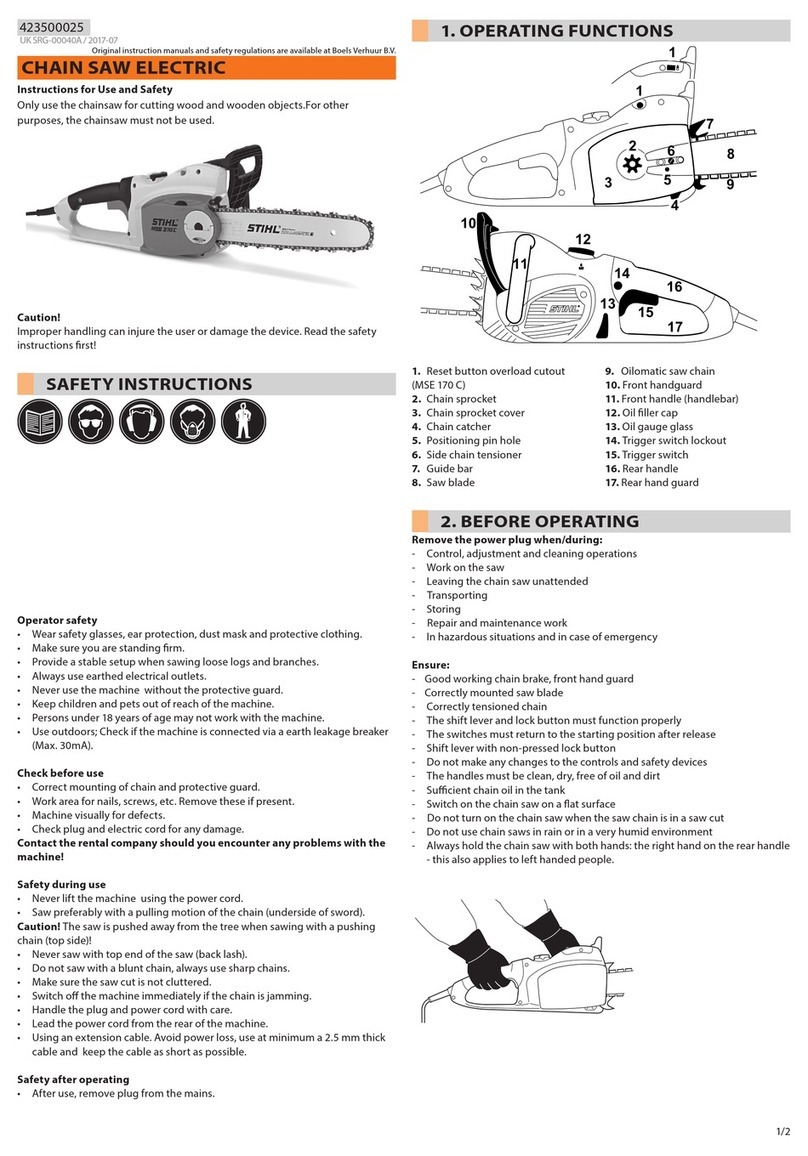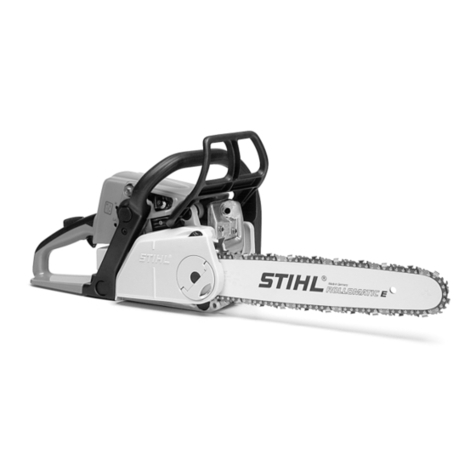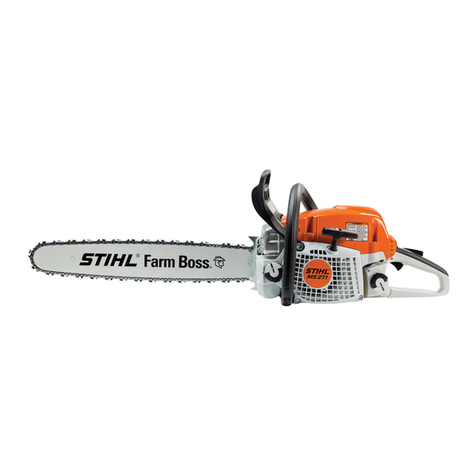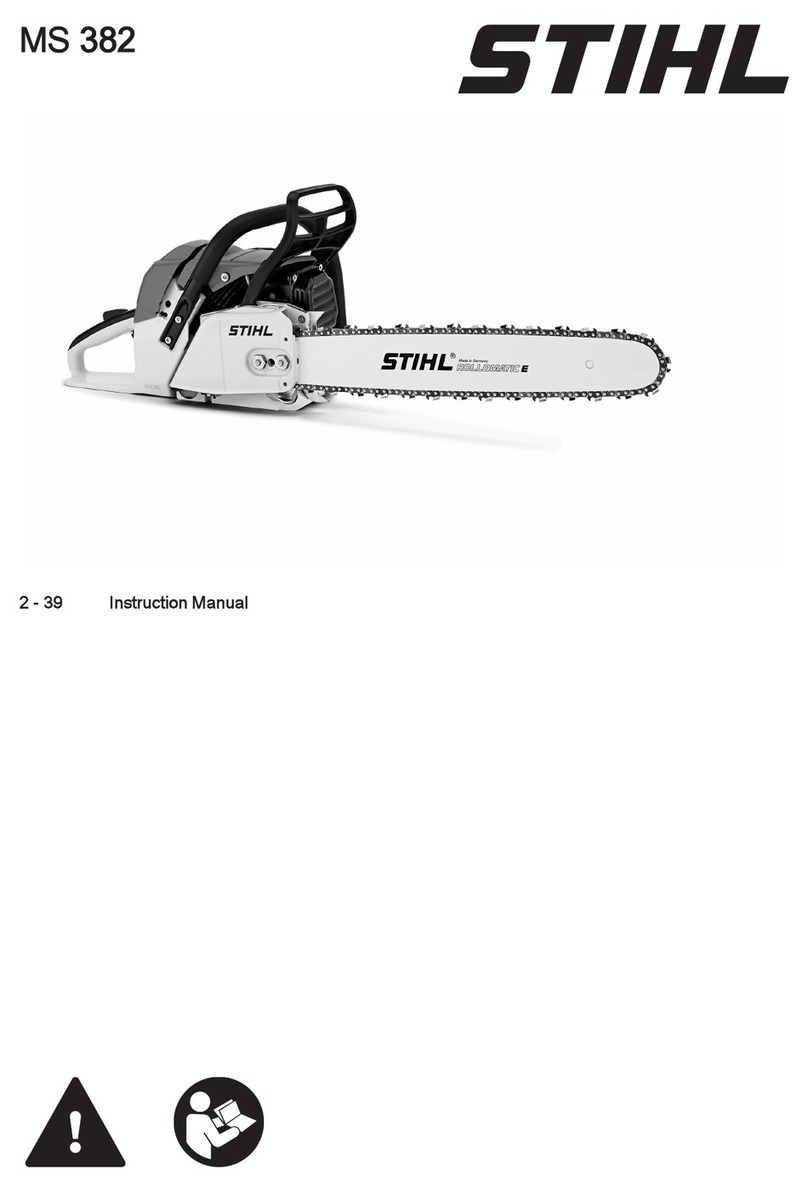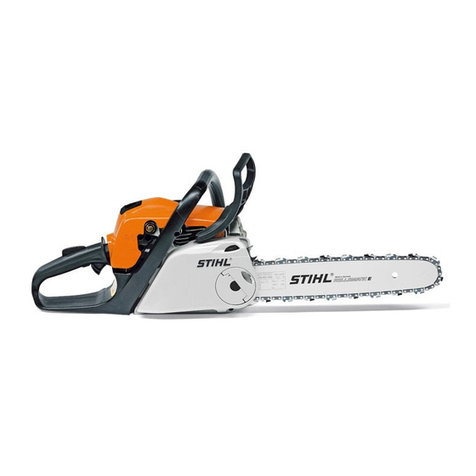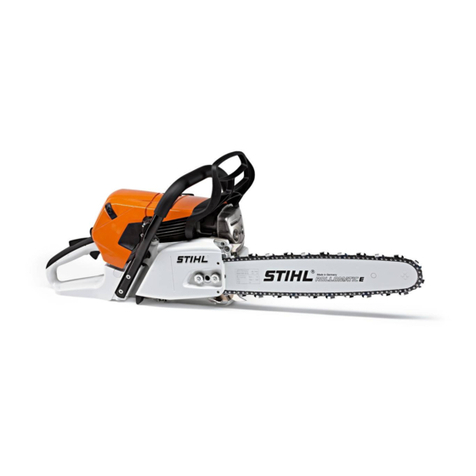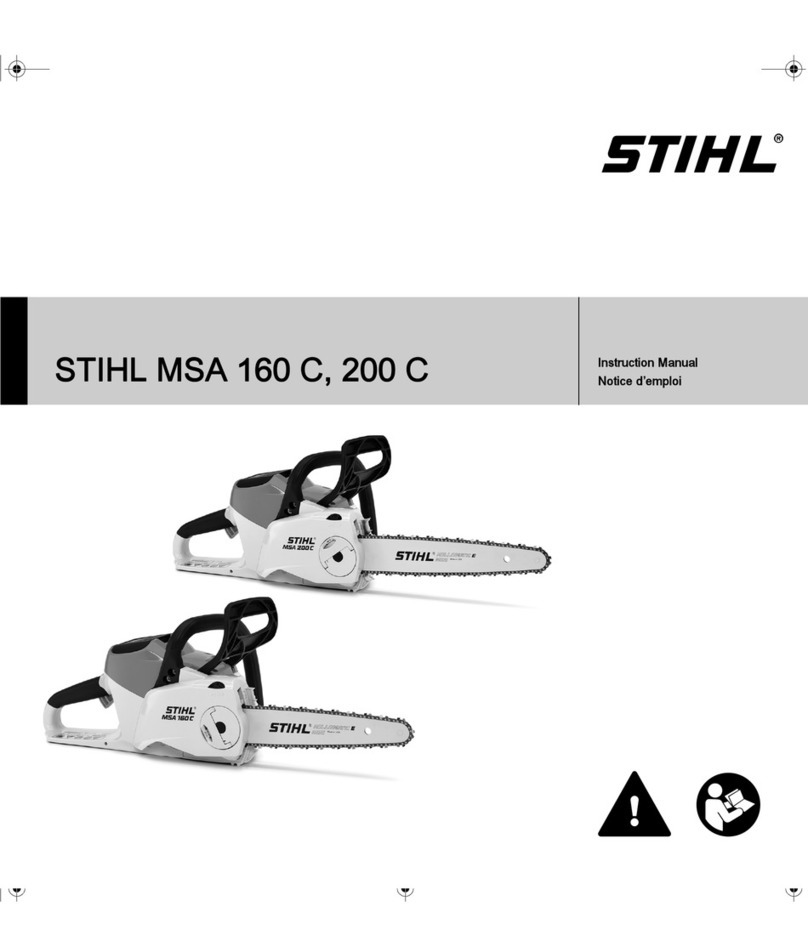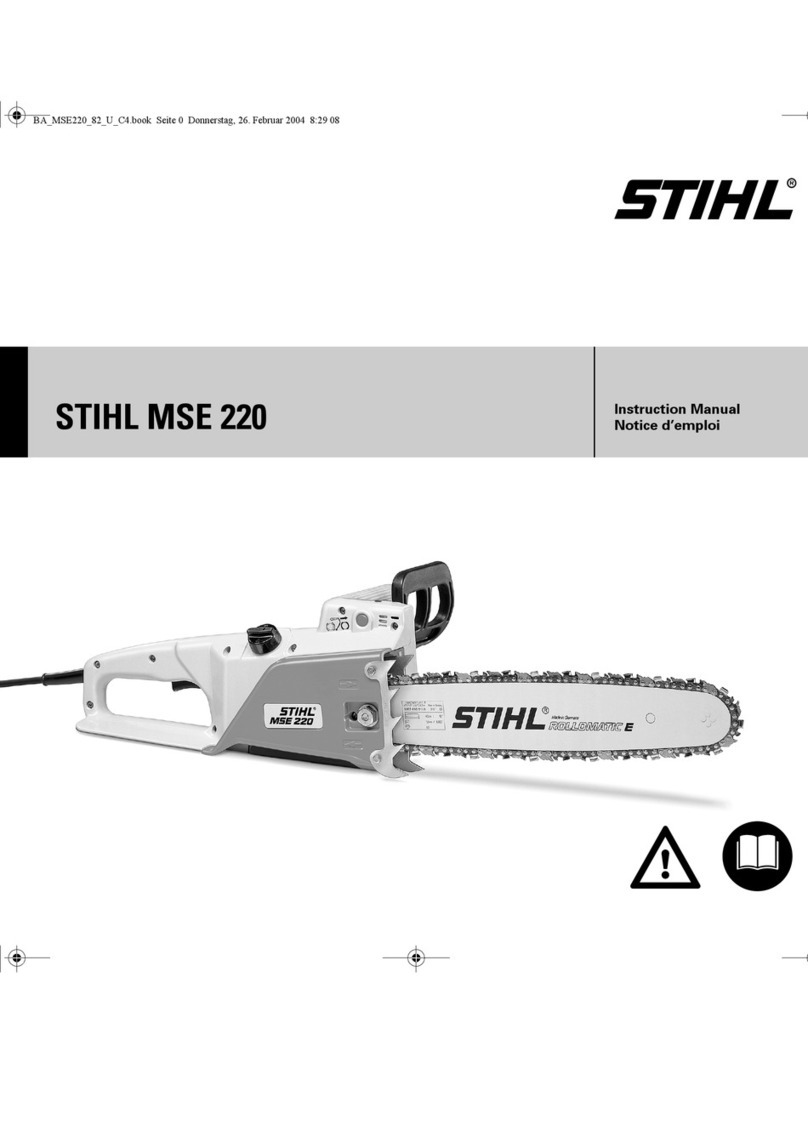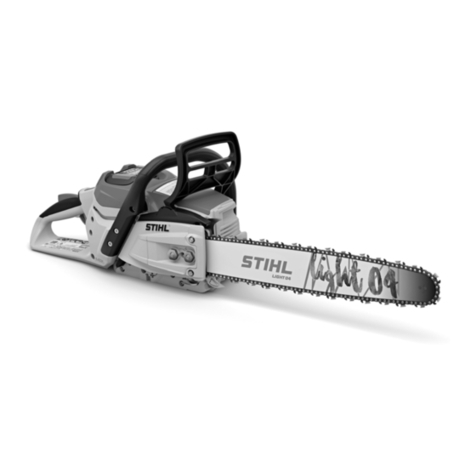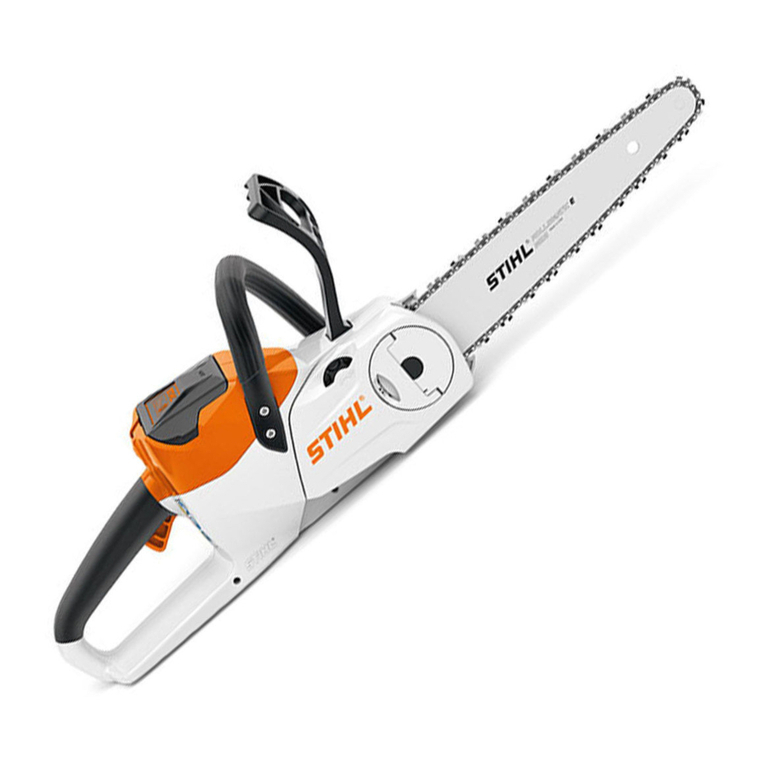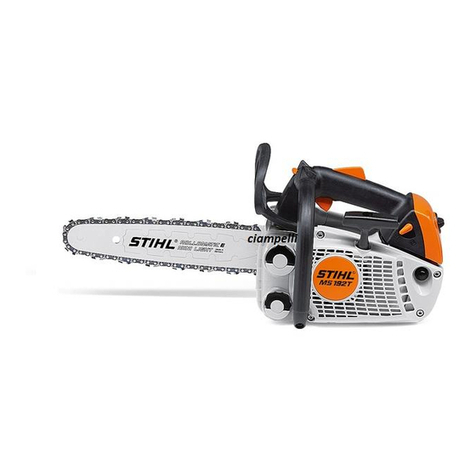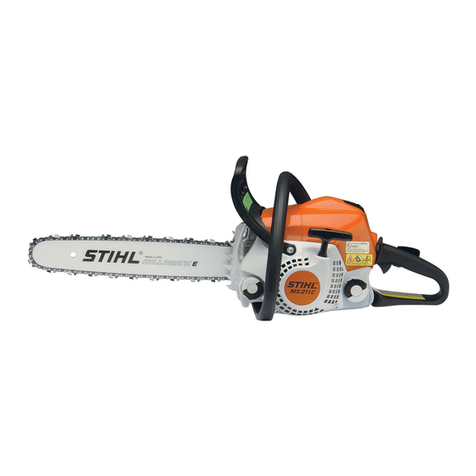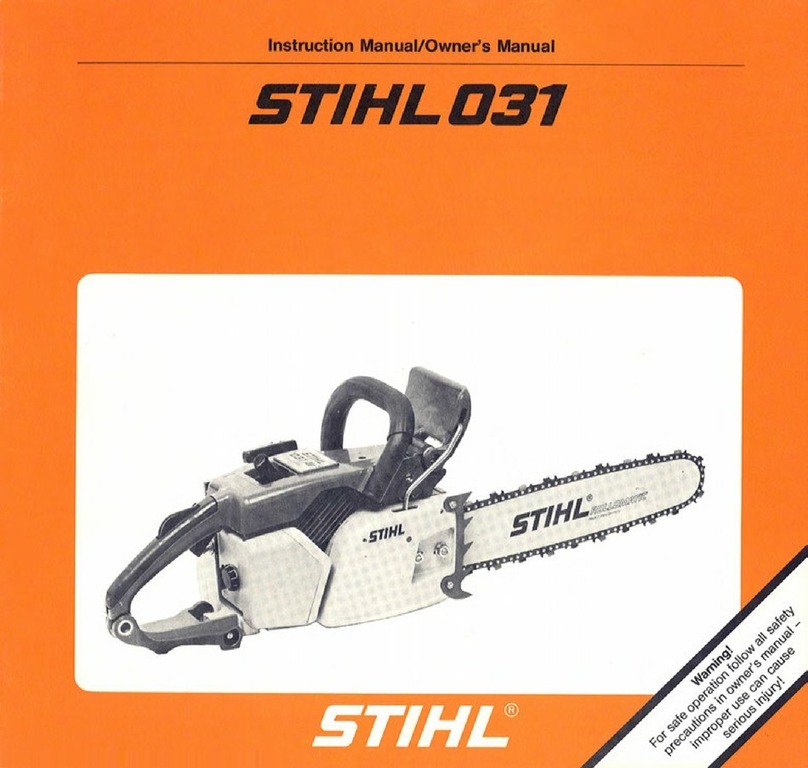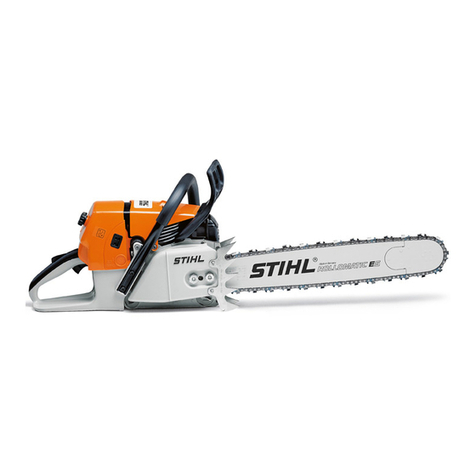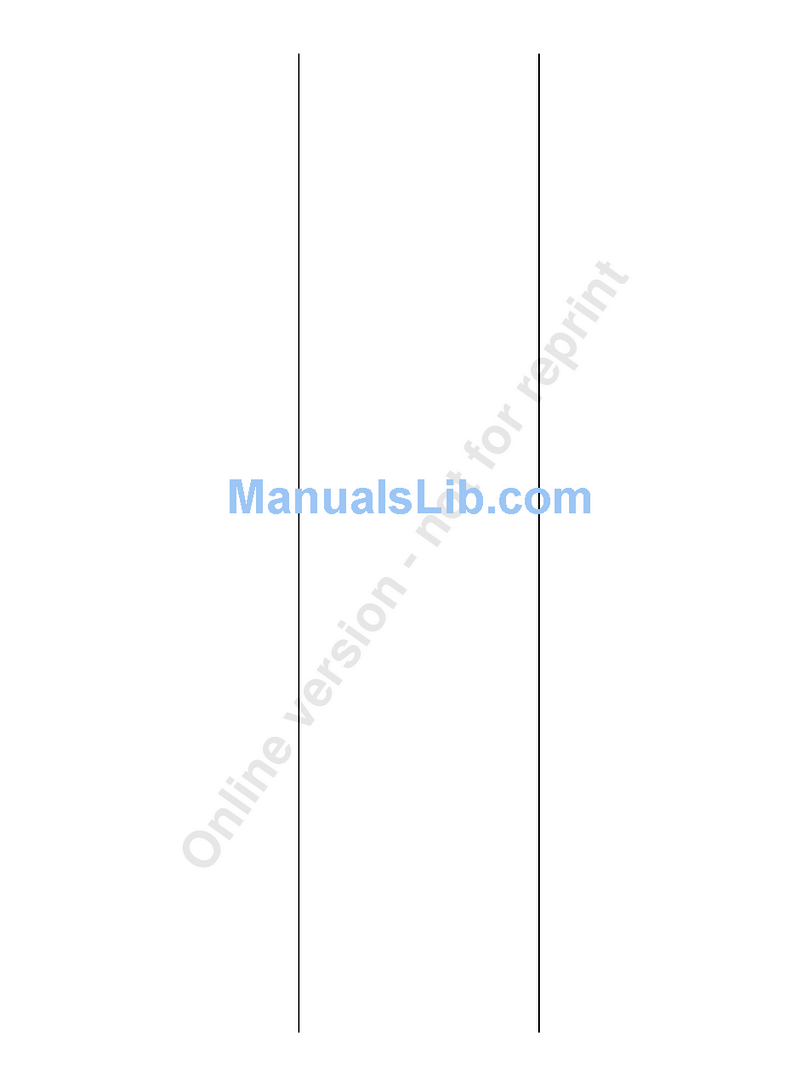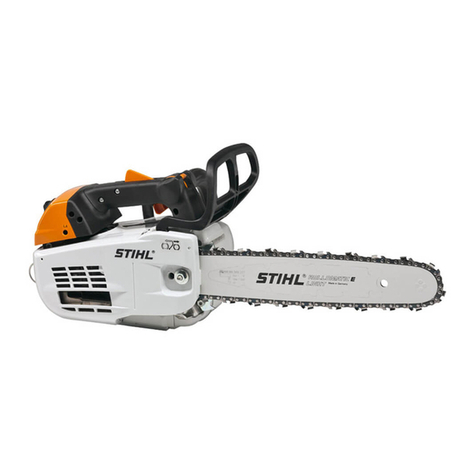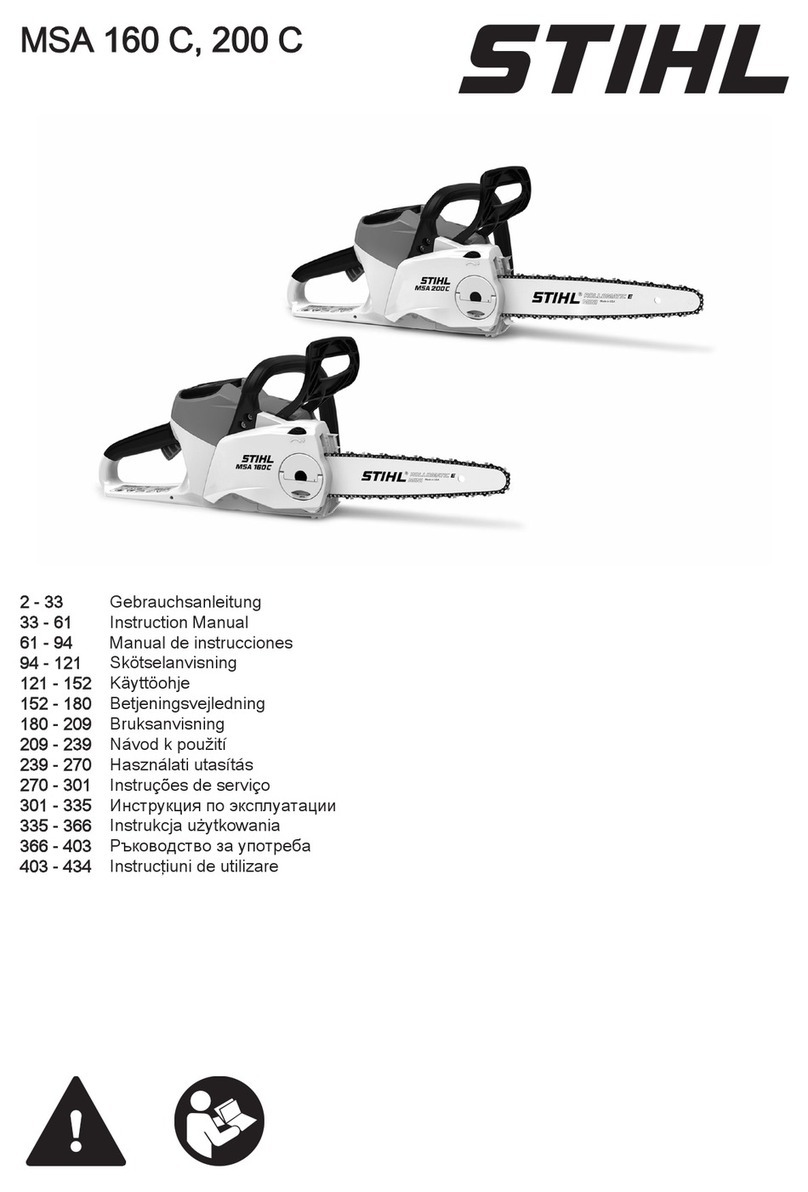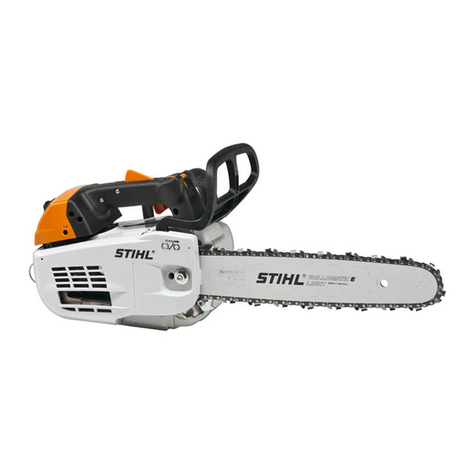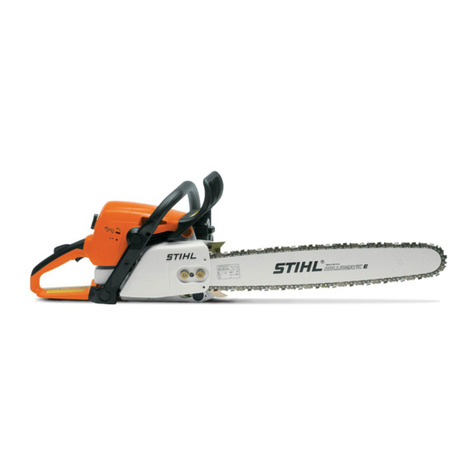
► Do not charge a damaged or defective bat‐
tery.
► If the battery is dirty or wet: clean the bat‐
tery and allow it to dry.
► Do not modify the battery.
► Do not insert objects into the apertures in
the battery.
► Never connect the battery terminals to met‐
allic objects and cause a short circuit.
► Do not open the battery.
► Replace worn or damaged warning signs.
■ Fluid may leak from a damaged battery. If the
fluid contacts the skin or eyes, this may cause
irritation.
►Avoid contact with the fluid.
► In the event of contact with the skin: wash
the affected areas with plenty of soap and
water.
►In the event of contact with the eyes: rinse
the eyes with plenty of water for at least 15
minutes and seek medical attention.
■A damaged or defective battery may emit an
unusual odour, smoke or catch fire. This may
result in serious or fatal injury to people and
damage to property.
►If the battery emits an unusual odour or
smoke: do not use the battery and keep it
away from flammable materials.
►If the battery catches fire: try to extinguish
the battery using a fire extinguisher or
water.
4.6.5 Charger
The charger is in a safe condition if the following
points are observed:
–Charger is undamaged.
–Charger is clean and dry.
WARNING
■If components do not comply with safety
requirements, they will no longer function
properly and safety devices may be rendered
inoperative. This can result in serious or fatal
injuries.
►Do not use a damaged charger.
► If the charger is dirty or wet: Clean the
charger and allow it to dry.
► Never attempt to modify the charger.
► Never insert objects in the charger’s open‐
ings.
► Never bridge the charger's contacts with
metallic objects (short circuit).
► Do not open the charger.
4.7 Working
4.7.1 Cutting
WARNING
■Always work within calling distance of others
in case help is needed.
► Make sure than persons outside the work
area are within calling distance.
■ The user cannot concentrate on the work in
certain situations. The user can lose control of
the saw, stumble or fall and be seriously
injured.
►Work calmly and carefully.
► If light and visibility are poor: Do not use
your saw.
► Operate the chainsaw alone.
► Do not work above shoulder height.
► Watch out for obstacles.
► Stand on the ground while working and
keep a good balance. If it is necessary to
work at heights: Use a lift bucket or a safe
platform.
►If you begin to feel tired: Take a break.
■ The rotating saw chain can cut the operator.
This can result in serious injuries.
► Do not touch the rotating saw chain.
► If the saw chain is blocked by an object:
Switch off the chainsaw, engage the chain
brake and remove the battery. Then
remove the object causing the blockage.
■The rotating chain becomes hot and expands.
If the chain is not lubricated sufficiently or not
re-tensioned at regular intervals, it may come
off the guide bar or break. This can result in
serious injuries and damage to property.
►Use special chain oil.
► Check oil level in tank regularly during cut‐
ting work. Before the oil tank runs empty:
Fill up with chain oil.
►Check chain tension regularly during cutting
work. If chain tension is insufficient: Ten‐
sion the chain.
■If the behavior of the saw changes during
operation or feels unusual, it may no longer be
in a safe condition. This can result in serious
injuries and damage to property.
►Stop work, remove the battery and contact
your STIHL servicing dealer for assistance.
■ Saw vibrations may occur during operation.
► Wear gloves.
► Take regular breaks.
► If signs of circulation problems occur: Seek
medical advice.
English 4 Safety Precautions
8 0458-716-0121-D
